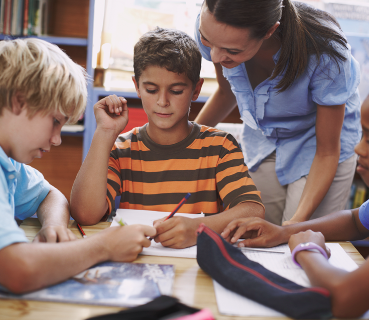Scaffolding is a powerful instructional strategy that supports student learning by breaking complex tasks into manageable steps and gradually reducing assistance as learners gain independence. When applied within personalized learning environments, scaffolding ensures that all students—regardless of their starting point—receive the guidance they need to succeed on their individual learning paths.
What Is Scaffolding in Education?
Scaffolding is the process of providing temporary support structures to help students achieve learning goals they might not reach independently. These supports can include prompts, modeling, tools, feedback, or structured practice. As students build confidence and skill, the supports are gradually removed, allowing for greater autonomy.
The Role of Scaffolding in Personalized Learning
In personalized learning, students move through content at their own pace and engage with material in ways that align with their strengths and interests. Scaffolding complements this approach by:
- Bridging the gap between current understanding and learning goals
- Supporting students through new or challenging content
- Encouraging persistence and risk-taking in a safe environment
This combination leads to deeper learning and long-term skill development.
Scaffolding Strategies for Personalized Success
- Set Clear, Personalized Learning Goals
- Begin with student-friendly goals tailored to individual needs
- Use tools like checklists and visual organizers to help students track progress
- Provide Models and Examples
- Show examples of completed work or demonstrate the process
- Use anchor charts or video tutorials to support visual and auditory learners
- Use Step-by-Step Instructions
- Break complex tasks into smaller, logical steps
- Guide students through initial tasks with verbal or written instructions
- Offer Sentence Starters and Graphic Organizers
- Help students organize their thoughts and communicate clearly
- Customize supports to align with student reading or language levels
- Embed Checkpoints and Feedback Loops
- Include regular moments for students to reflect and get feedback
- Adjust instruction or provide additional support based on performance
- Gradually Release Responsibility
- Move from teacher-led instruction to guided practice, then independent work
- Encourage students to ask questions, set goals, and self-assess
Leveraging Technology to Scaffold Learning
Educational technology can enhance scaffolding by:
- Offering adaptive tools that adjust content based on performance
- Providing just-in-time hints, explanations, or language support
- Enabling students to revisit instructional videos or tutorials as needed
Platforms such as Khan Academy, Google Workspace, or interactive reading apps can help differentiate support across learning levels.
Supporting All Learners
Scaffolding is especially important for learners who:
- Are developing language proficiency
- Need extra time or multiple attempts to master content
- Learn best through visual, auditory, or hands-on experiences
By providing inclusive, scaffolded instruction, educators can ensure equitable access to personalized success for all students.
Conclusion
Scaffolding is a cornerstone of personalized learning that empowers students to take meaningful steps toward mastery. By offering timely support, building independence, and honoring individual learning paths, educators can create an environment where every learner is set up for long-term success. With thoughtful scaffolding, personalized learning becomes not just possible—but powerful.














